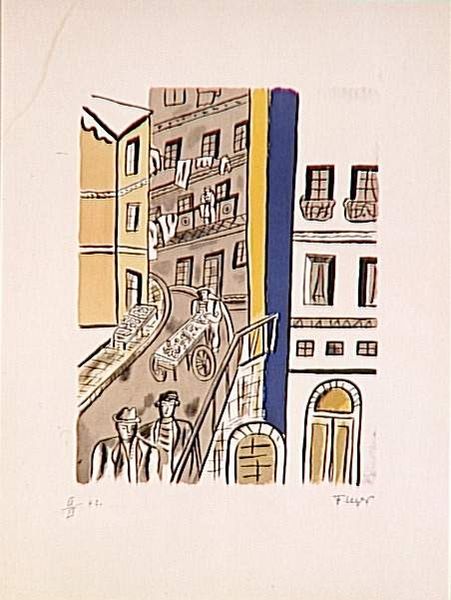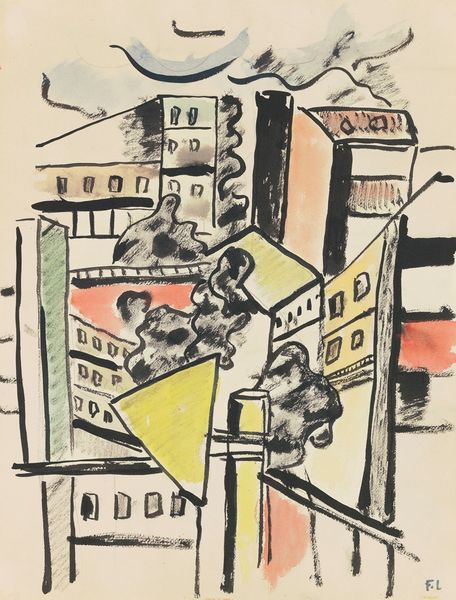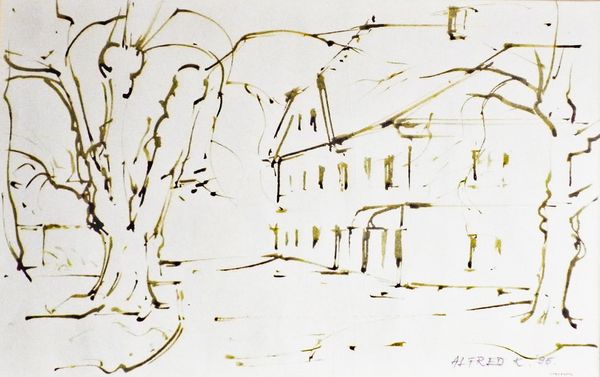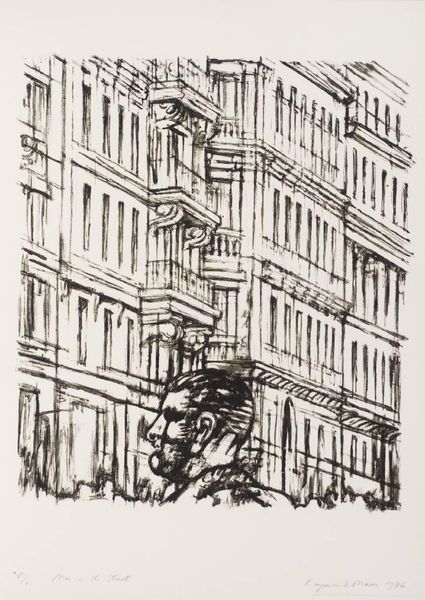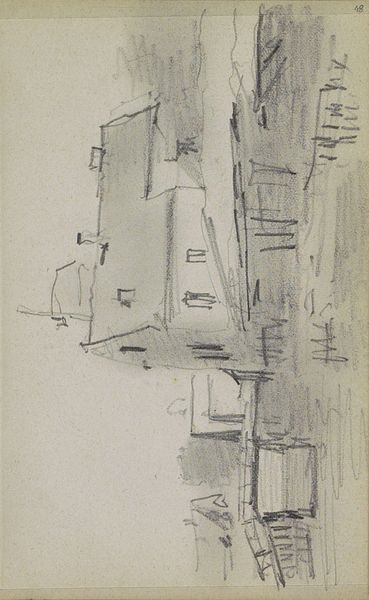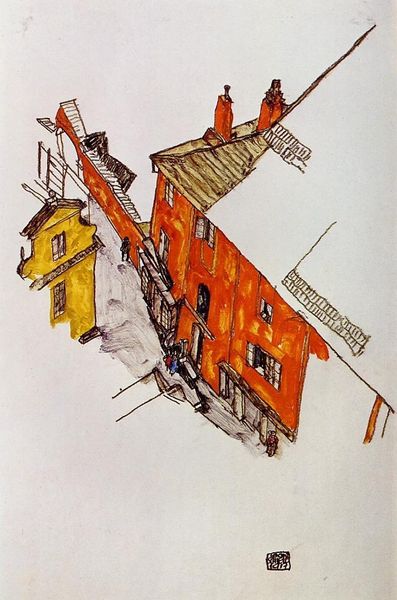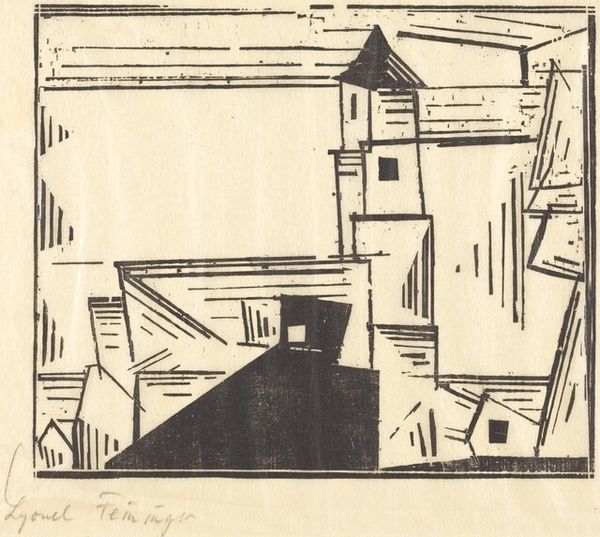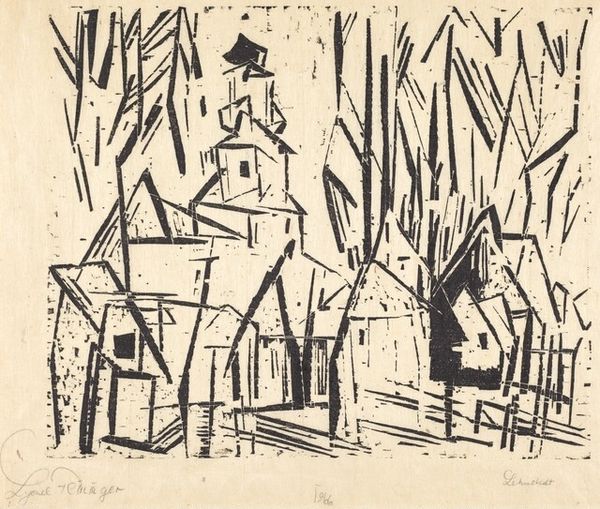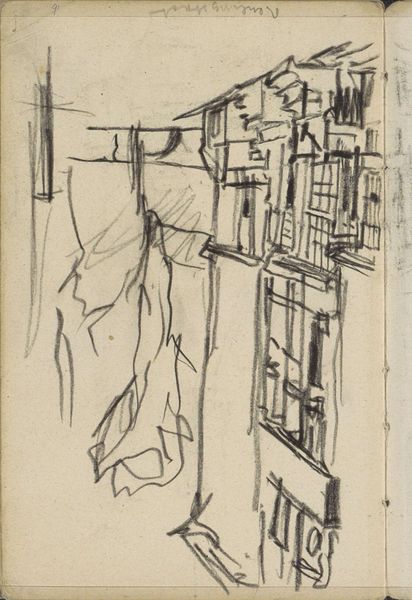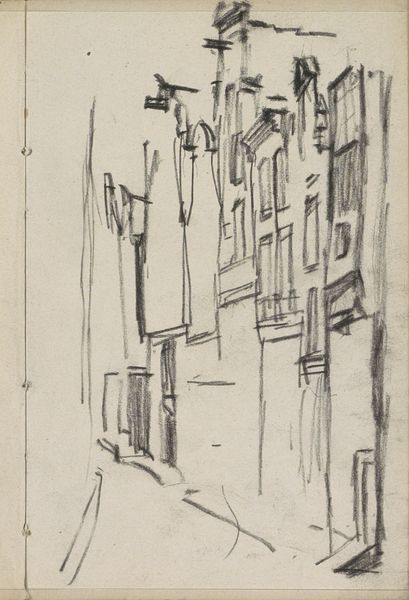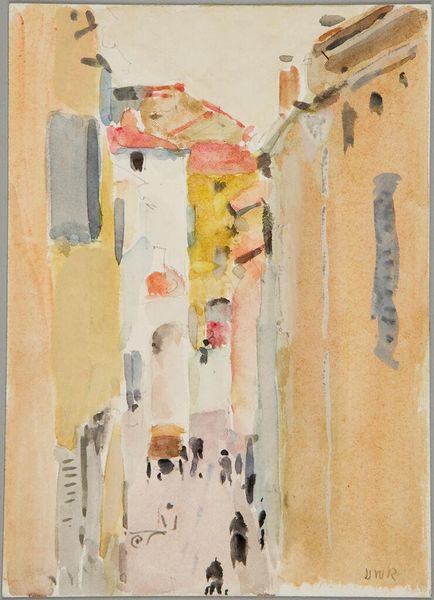
drawing, ink
#
drawing
#
cubism
#
house
#
ink
#
line
#
cityscape
#
building
Copyright: Fernand Leger,Fair Use
Curator: Fernand Léger’s ink drawing, "Hive," offers an intriguing glimpse into his exploration of urban landscapes. It’s currently held at the Musée National Fernand Léger. What’s your initial take? Editor: It feels almost unfinished, a quick sketch capturing a fleeting moment. There's something both charming and a little unsettling about the bare lines and the splashes of yellow, giving a kind of jaundice view. Curator: Indeed, the linework carries a raw immediacy. Look closely, and you’ll notice Léger's use of Cubist principles—breaking down the buildings into geometric forms while still retaining a sense of recognizable architecture. Consider how the houses appear almost stacked, creating a hive-like structure. That symbolic element feels intentional. Editor: Right, that stacking effect and implied perspective create an interesting power dynamic. I think it hints at urban planning issues and societal pressure—this feels less like a simple cityscape and more like a comment on how we're crammed together in these living spaces, right? Curator: A compelling point. Léger, after all, was deeply interested in the social implications of modern life. I can see the buildings as representations of shelter, and a kind of psychological state. It’s almost a diagrammatic presentation of urban density and social hierarchy. I'm thinking about it as a place for swarming worker bees, to some extent. Editor: Agreed. And I can't help but think of how such concentrated spaces often become the flashpoints for activism. Those yellow stains, what I had viewed with a bit of cynicism, might signal not an infection, but rather some burning issues related to community identity, perhaps also relating to housing or wealth distribution that are reflected here in the urban architecture. Curator: A vital connection. Léger provides a template; we bring our own social realities and meanings to fill those bare lines. He’s prompting us to consider not just what a city looks like but what it represents in social terms. Editor: Exactly. "Hive" does more than depict buildings—it encapsulates layers of lived experiences and simmering social tensions within the frame of architectural form, however bare-boned that construction might be! Curator: It highlights Léger's foresight, even within a seemingly simple composition, he shows us an early modern world rapidly taking shape—for better or worse. Editor: For me, it serves as a stark reminder of how buildings, and the city itself, act as silent witnesses and active participants in the social and political narratives that continue to unfold.
Comments
No comments
Be the first to comment and join the conversation on the ultimate creative platform.
